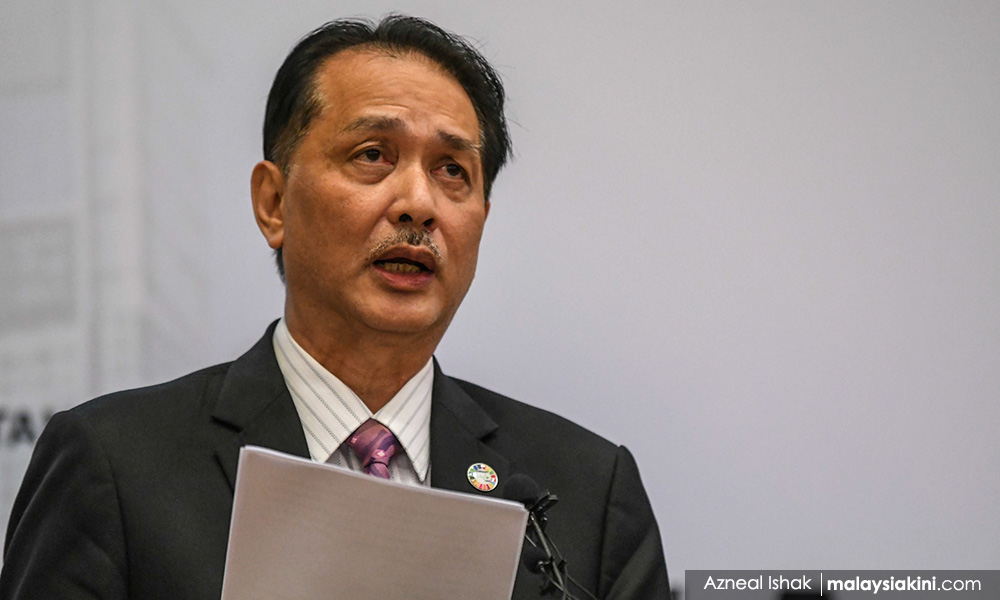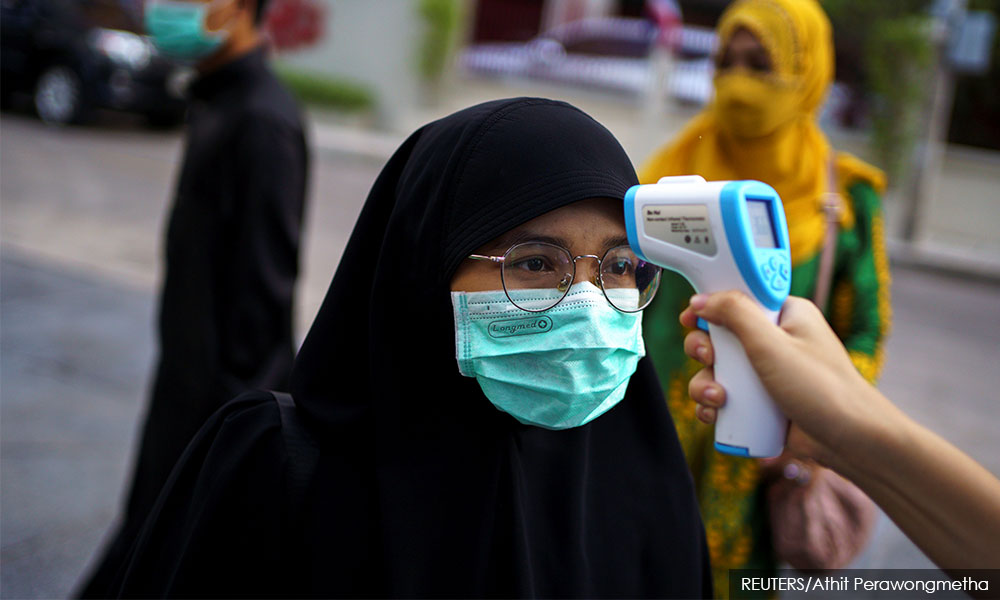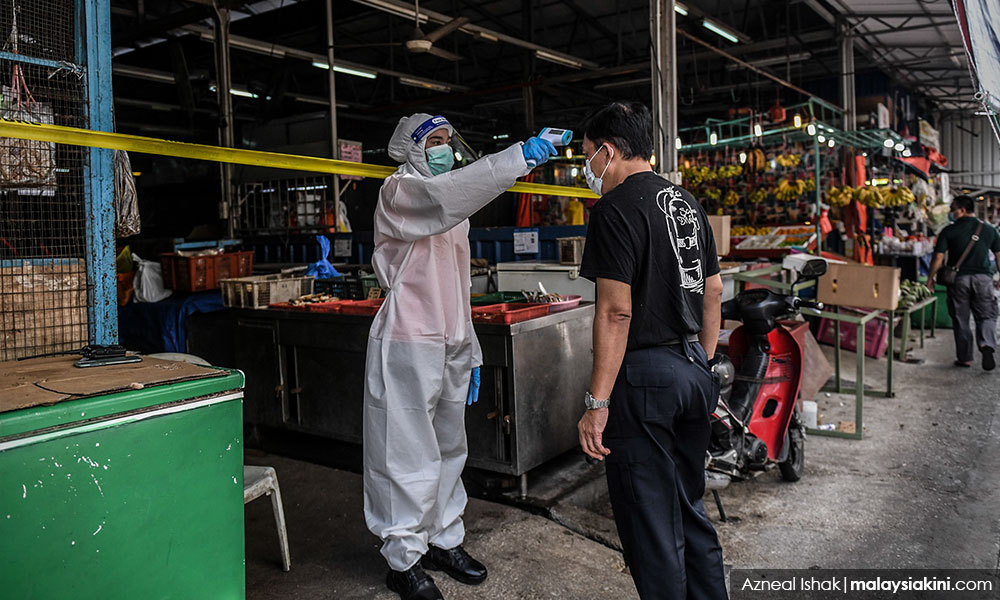
Published by Malaysiakini & Malay Mail, images from Malaysiakini.
The countdown to Aug 31 is fast approaching – when the recovery movement control order (MCO) will elapse, and the government has to decide whether to continue with another phase or totally lift the MCO.
An essential factor to consider in my opinion is a focus on the rate of infection, R0 (pronounced R nought), the basic reproduction rate which measures how contagious and transmissible is the virus.
Once this is understood, it is easier to grasp the proposal for an on-and-off MCO, otherwise known as an intermittent MCO.
Besides R0, there is the effective reproduction rate known simply as R but let’s not be intimidated by this R-family terminology. Suffice for us to know that according to scientists, it’s important to appreciate that R0 is not a fundamental property of the disease, and is considered important because if it’s greater than one, the infection is likely to keep spreading. If it’s less than one, the outbreak is likely to peter out.
As the disease progresses, the reproduction rate changes due to fewer susceptible people to infect. R0 also changes due to the interventions we put in place to slow the spread of the disease. Once the disease is in full-flow, we tend to call it R – the effective reproduction rate or just the reproduction rate.
For the purpose of this article, let’s just stick to R0 when we talk about the reproduction rate.
The inspiration for this strategy of managing the R0 via the on-and-off MCO came from Health director-general Dr Noor Hisham Abdullah as well as from research done by a team of Harvard scientists led by Dr Stephen Kissler on the transmission dynamics of the novel coronavirus through the post-pandemic period.
Let’s dissect this one by one.
At a media conference on July 23 while we were in the recovery MCO stage, Noor Hisham said R0 for Covid-19 had increased to 1.36. This number is a huge jump from an R0 of 0.3 during the conditional MCO which ended on June 9. From an R0 of 0.3 to 1.36, that was indeed a very serious jump in the infection rate – a 353 percent rise in R0.
At the same media conference, Noor Hisham also said if the R0 exceeds 1.6, Malaysia may see a surge in the number of new Covid-19 cases – in other words, an exponential increase in daily infections harkening back to the days when the daily infections were in the three digits or more.

In an Aug 5 Facebook post, Noor Hisham said: “Current update on the number of active cases and daily R0… as of today, we managed to bring down… from 1.36 to less than 1.0 from Aug 1, and yesterday (Aug 4) was 0.78.”
That was the last we heard about R0 in Malaysia. But it doesn’t matter because the Health director-general (DG) has already established some sort of yardsticks on how to manage the R0 within the context of an on-and-off MCO.
Before going into the details of this strategy of intermittent MCO after Aug 31, let us recap the various MCOs that have been implemented. The original MCO (let’s call it MCO 1.0) was implemented from March 18 to May 4. Next was the conditional MCO (MCO 2.0), implemented on May 5 to June 9. Lastly, the recovery MCO (MCO 3.0) started from June 10 and will end Aug 31.
There’s another MCO which was not implemented nation-wide but in certain areas of the countries designated as red zones, and this was called the enhanced MCO.
The following are my suggestions:
- Lift the MCO completely when the R0 is below 1
- Reinstate MCO 2.0 once the R0 touches the threshold level of 1
- Reinstate MCO 3.0 when R0 reaches 1.3
- Reinstate MCO 1.0 when R0 reaches 1.5

At all times, the SOPs for MCO 1.0 must be in place, even after the MCO is lifted, except that when the R0 is below 1, the implementation of these SOPs is left to the social responsibility of the rakyat.
It is only when the R0 touches 1, the authority steps in and takes action against those violating these SOPs, with a sterner emphasis when the R0 hits 1.3 and above. It is in this sense that the intermittent (on-and-off) MCO is implemented.
According to the Harvard scientists mentioned above, a one-time lockdown won’t halt the coronavirus and repeated periods of social distancing may be required into 2022 to prevent hospitals from being overwhelmed.
Their study was modelled along the pandemic’s trajectory in April as the US entered the peak of its Covid-19 caseload and the various states in the US were clamouring for an eventual easing of tough lockdown measures.
The Harvard team’s computer simulation, which was published in a paper in the journal Science, assumed Covid-19 will become seasonal, like closely related coronaviruses that cause the common cold, with higher transmission rates in colder months.
The words “social distancing” appeared in the Harvard scientists report though now it is no longer fashionable to say it. Its replacement, physical distancing, is gaining prominence now.
This is especially after the World Health Organisation had highlighted that the main concern is that “social distancing” comes with negative connotations that make people believe they must cut social aspects of their lives and completely separate or isolate themselves from others which will have a negative repercussion on mental health.

However, viewed from a different perspective which will help one to understand the on-and-off MCO, during MCO 1.0, people stayed at home completely where there is nil physical distancing because dining-in at eateries was totally forbidden, and what was relevant then was social distancing because you were really cut off physically from other people except members of your household in which you don’t have to observe physical distancing at home.
Put it differently, when there was MCO 1.0, it was social distancing that you had to observe, while all other MCOs – MCO 2.0 and the MCO 3.0 – you observed physical distancing because limited social gathering is allowed.
The beauty about this on-and-off MCO is that when it is off, the economy can recover with full speed, but when it is on, the economy recovers in proportion to the strict implementation of the SOPs under the respective MCOs.
Jamari Mohtar is Director of Media & Communications at EMIR Research, an independent think-tank focused on strategic policy recommendations based upon rigorous research.

